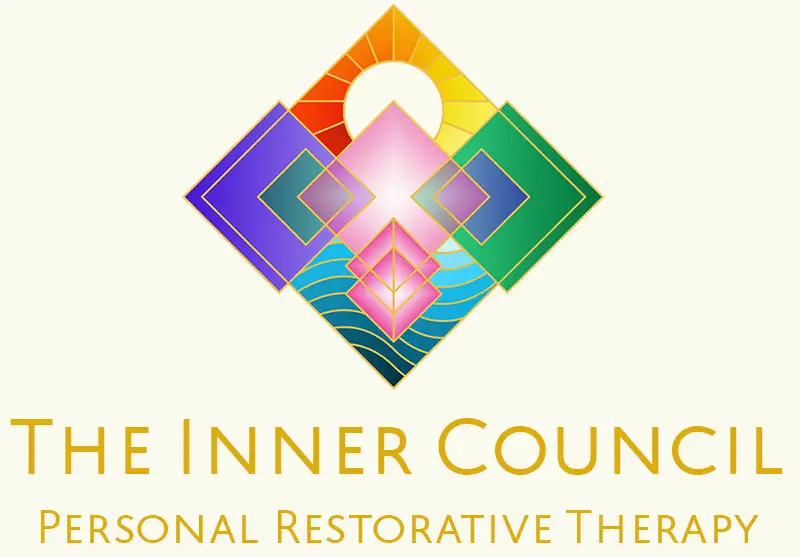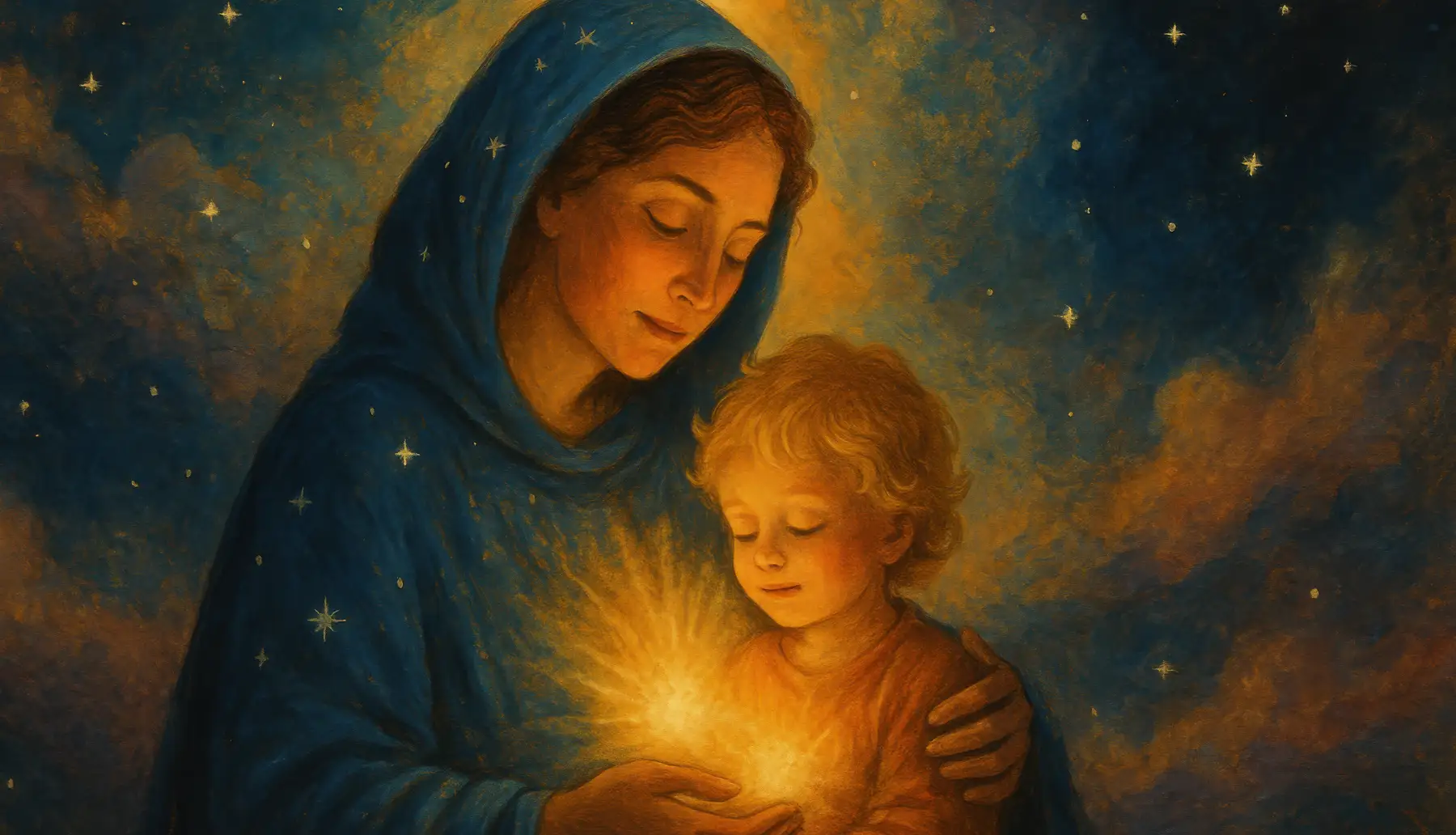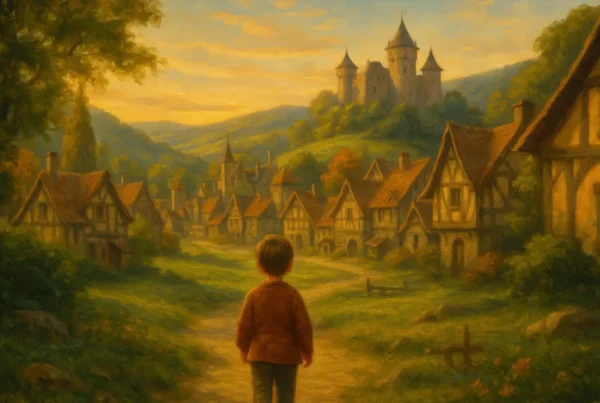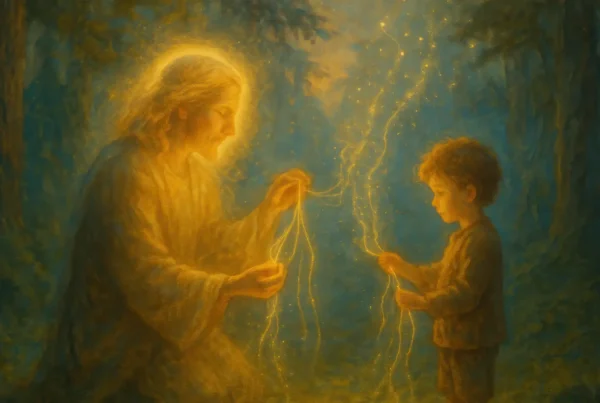BOOK YOUR WORKSHOP TODAY
All posts published here are presented as casual conversation pieces to provoke thought in some direction or another, they do not necessarily represent fixed opinions of the Inner Council, as our work exists beyond the spectrum of bound statement and singular clause.
The Inner Child is a divine blueprint—the soul’s original pattern waiting to enter conscious life.
Key Takeaways
- Inner Child emergence mirrors spiritual birth, requiring readiness, emotional safety and inner spaciousness.
- The practitioner serves as a cosmic doula, holding the field rather than directing the process.
- Emotional contractions and resurfacing memories signify the psyche preparing its birth canal.
- The moment of emergence is subtle yet transformative, reshaping the entire internal landscape.
- Long-term integration unites the adult self’s wisdom with the Inner Child’s intuition, creativity and purpose.
Introduction — The Archetype of the Cosmic Doula
The work of awakening the Inner Child is often described as healing, reconnection or integration, yet at its deepest level it is something far more primordial: a birth. When someone enters the Inner Council tradition, they may believe they are approaching a psychological exercise, but what they are truly preparing for is a moment of emergence in which a dormant aspect of the soul steps forward into conscious life. This moment cannot be forced, predicted or summoned through technique alone; it unfolds when readiness, safety and soulful intention converge in the inner world. In this threshold space, the practitioner does not act as a therapist or guide in the conventional sense. They become a cosmic doula—a midwife of consciousness who supports the descent of something ancient, tender and immeasurably wise. This archetype, found in mythic traditions across cultures, governs all processes of spiritual coming-into-being: the arrival of a new identity, a restored innocence, a luminous presence that has been waiting for the individual to turn toward it with devotion. To engage in Inner Child work at depth is to step into a birthing chamber where the psyche opens, the heart dilates and a new form of life is welcomed from the imaginal realm into human awareness.
- The Inner Child’s arrival mirrors spiritual birth rather than psychological repair.
- Practitioners hold space rather than intervene, midwifing emergence instead of directing it.
- Birth imagery appears naturally when clients reach the threshold of soul-return.
The archetype of the doula arises whenever a person undergoes transformation that cannot be completed alone. Birth is always relational, always supported, always held by the presence of another who remembers what the emerging one has forgotten. So it is with the Inner Child. The practitioner’s role is not to deliver insights or impose interpretations, but to sustain the symbolic womb in which the soul can safely reveal itself. Many who come to this work feel, even before meeting their Inner Child, that something within them is pressing toward light. They enter with an intuition that a part of themselves seeks to be born. The cosmic doula archetype honours that knowing, ensuring that the process unfolds with reverence, gentleness and the quiet certainty that a new life—long concealed—is ready to breathe.
The Inner Child as Divine Blueprint
At the heart of Inner Council work lies a truth that many people sense intuitively long before they can articulate it: the Inner Child is not simply a memory, a wounded fragment or a psychological construct. They are the divine blueprint—the crystallised essence of the soul’s original pattern, the spark of consciousness that existed before experience, trauma or identity took shape. When we speak to the Inner Child in imaginal space, we are not speaking to the past; we are speaking to the pre-incarnate self, the pure intelligence that arrived with us at birth, carrying an intact knowing of who we are meant to become. This is why Inner Child encounters feel so strangely familiar. People often describe their Inner Child with phrases like “I’ve known them forever,” “They feel older than me,” or “They know things I didn’t realise I knew.” The Inner Child occupies the paradoxical position of being both the youngest and the oldest part of the psyche—a timeless seed of selfhood wrapped inside the fragile beginnings of human life. It is this divine blueprint that we are truly midwifing during the birthing process, and its emergence marks the return of a forgotten wisdom that belongs uniquely to the individual yet resonates with something universal and ancient.
- The Inner Child holds the original soul-pattern before conditioning shaped the personality.
- Encounters often feel like meeting an eternal self rather than a younger version of the adult.
- The Inner Child contains innate knowledge, creativity and orientation toward purpose.
To recognise the Inner Child as divine blueprint is to approach the work with a very different posture. Instead of “trying to fix” the child within, we learn to listen to them, because they carry the code we are meant to unfold in this lifetime. Their voice is not primitive or undeveloped; it is pure. Their perceptions are not naive; they are uncorrupted by the noise of fear and social expectation. And their presence is not a regression—it is a return. When the Inner Child begins to awaken, they do not merely reveal who we were; they reveal who we have always been. This recognition becomes the foundation for every subsequent stage of the birthing process.
The Descent of the Soul — Why the Inner Child Isn’t Born Until You’re Ready
The emergence of the Inner Child does not happen simply because someone wants it to. It happens when the psyche recognises that the adult self has cultivated enough stability, emotional presence and internal spaciousness to receive a new form of life. In the same way that a physical child will not arrive before the body has prepared, the Inner Child will not descend into conscious awareness until the inner environment can hold them without collapsing into fear, overwhelm or dissociation. The Inner Child exists eternally in the imaginal layer, but their arrival—their crossing from potential into presence—depends on readiness. This readiness is not about perfection or healing every wound; it is about willingness to care, to feel, to protect, to soften and to remain present when vulnerability rises. Many people intuitively sense this long before the moment of birth. They describe feeling a pressure inside the heart, a stirring of innocence, or a faint but persistent knocking from within. This is the descent of the soul beginning its slow movement toward consciousness, waiting for the adult self to open the door.
- The Inner Child waits for emotional readiness, not intellectual understanding.
- Descent begins gently—through intuition, dreams, symbols and emotional “quickenings.”
- The psyche protects the Inner Child until the adult can hold them safely.
This is why people often report a strange mixture of longing and fear when they approach Inner Child work. The longing comes from the soul’s instinct to reunite with its own blueprint; the fear comes from knowing, deep down, that this reunion will require honesty, tenderness and a willingness to meet parts of oneself that were abandoned long ago. The descent of the Inner Child is an act of grace—an invitation that cannot be forced, only answered. And when the adult self finally signals that it is ready to listen without judgement, ready to protect without withdrawing, ready to nurture without condition, the Inner Child begins to move. They cross the threshold slowly, like dawn breaking, until their presence becomes unmistakable. This movement marks the beginning of true rebirth, the opening contraction of a long-awaited emergence.
The Birth Canal of the Psyche — Preparation, Pain, and Transformation
When the Inner Child begins to descend toward consciousness, the psyche undergoes a process uncannily similar to physical labour. Old emotional structures tighten, long-suppressed feelings contract inward, and the adult self may experience waves of discomfort, anxiety or vulnerability. These contractions are not signs of failure—they are signs of opening. The psyche stretches to accommodate the arrival of something profoundly delicate and profoundly powerful. Just as the body prepares for biological birth by softening, loosening and making room, the emotional body prepares for Inner Child emergence by dissolving outdated defences and loosening rigid identities. Many people feel this as an inner pressure, a subtle ache, or a sense that something is reorganising beneath the surface. Unresolved memories rise like forgotten sediment, not to overwhelm or punish, but to clear the channel through which the new self will come. This is the birth canal of the psyche: a symbolic corridor of tension, revelation and transformation that allows the Inner Child to move from the imaginal world into embodied awareness.
- Emotional contractions signal the psyche widening to receive new consciousness.
- Old memories and patterns arise to clear space, not to destabilise the individual.
- The birth canal is a symbolic process mirroring real labour—intense, purposeful, transformative.
This phase often surprises people because it feels both ancient and immediate. There is the instinctive sense that something long blocked is finally shifting, that the soul is rearranging itself to allow an overdue arrival. Some experience this as a kind of turbulence, others as a gentle but insistent pull inward. In either case, the movement is intelligent. Nothing comes that the person is not ready to meet. The contractions of the psyche soften when acknowledged and strengthen when resisted, teaching the adult self how to stay present through discomfort and stay open through fear. This is where the symbolic womb becomes active, guiding the individual deeper into themselves with each wave. When they learn to breathe through these contractions—emotionally, somatically, spiritually—the birth canal becomes not a place of suffering but a passage of becoming. The pressure eases, the inner world shifts, and the way clears for the child within to step forward into light.
The Role of the Practitioner — The Cosmic Doula in Practice
When a client enters the birth canal of Inner Child emergence, the practitioner steps into one of the most nuanced archetypal roles in the entire Inner Council tradition. They become a cosmic doula, a stabilising presence who holds the threshold between the adult self and the soul-child moving toward consciousness. Unlike traditional therapeutic roles that analyse, interpret or direct the process, the doula archetype operates through attunement, witnessing and energetic stewardship. Their task is not to deliver the Inner Child but to hold the psychic environment in which the birth can unfold at its natural pace. They listen for subtle shifts in the client’s tone, breath, posture and imaginal imagery, all of which indicate how close or far the Inner Child is from emerging. The practitioner’s presence becomes a regulating field—calm, grounded, receptive—so that the client’s nervous system can soften enough to open. Because the Inner Child is exquisitely sensitive to emotional atmosphere, the practitioner embodies the very qualities the client will soon need to offer their Inner Child: patience, gentleness, clarity and non-interference. In this sense, the practitioner models the kind of parent the Inner Child has been waiting for, not by instruction but by presence.
- Practitioners hold a stable field rather than push for breakthroughs.
- The doula archetype emphasises attunement, mirroring and safety over analysis.
- A calm practitioner nervous system becomes the template the client internalises.
Trained Inner Council practitioners quickly learn that the most important thing they can offer is not technique but containment. Too much intervention can overwhelm the emerging child; too little structure can leave the client disoriented at the threshold. The cosmic doula must therefore remain exquisitely attuned to pacing. They know when to follow the client’s imagery, when to slow the descent, when to name what is happening and when to let silence do the work. They sense when the client’s adult self is beginning to collapse under emotional weight and gently guide them back into the stabilising position of guardian and witness. Most importantly, they trust the intelligence of the process. They know that the Inner Child arrives in its own time, in its own way, and that the psyche never opens faster than it can integrate. By embodying this trust, the practitioner teaches the client how to trust themselves. And in that trust, the way clears. The symbolic atmosphere becomes breathable. The contractions soften. The adult self steadies. And the Inner Child—feeling the presence of two caregivers instead of one—draws nearer to birth.
The Moment of Emergence — When the Inner Child Arrives
The emergence of the Inner Child is rarely dramatic in the cinematic sense, yet it is one of the most profound threshold moments a person can experience. It often happens quietly, in a subtle shift of atmosphere, as if the inner world is holding its breath. The client may feel a softening inside the chest, a warmth blooming in the solar plexus or a sudden clarity that seems to descend rather than arise. Sometimes the Inner Child appears visually in imaginal space, sometimes they speak, and sometimes their presence is felt as an unmistakable emotional signature—tender, curious, vulnerable, ancient. Clients almost always describe this moment with a mixture of awe and recognition. They often say, “I know them,” even though they have never seen this child before. This is because the Inner Child is not a stranger but the original inhabitant of the psyche, the soul’s first face. When they arrive, the entire system rearranges itself around their presence. It is the moment the descent becomes embodiment, the moment the inner world shifts from preparation to contact. The symbolic womb opens and the child steps into consciousness, usually with a sense of being seen for the first time.
- Emergence feels familiar, intimate and often quietly overwhelming.
- The Inner Child appears through felt-sense, image, voice or a sudden, undeniable presence.
- The psyche reorganises instantly when the soul-child is met in full awareness.
Many people describe the moment of emergence as a paradox: gentle yet life-altering, small yet cosmic. There is often a sense of time dissolving. Tears may come without sadness. The body may tremble without fear. Some feel as though they are meeting an ancient companion; others say it is like remembering a dream they have lived a thousand times. Whatever the form, the arrival is unmistakable because it brings with it an inner stillness that feels almost sacred. The adult self recognises instinctively that this is the one they have been waiting for—this small being of light, wisdom and sensitivity. And in that recognition, a new relationship begins. The birth is complete not when the child appears, but when the adult self says, in some form, “I see you.” With those words, spoken aloud or inwardly, the child settles. The atmosphere shifts. The bond forms. And the next phase of the journey can begin.
The Post-Birth Bond — Attunement, Care, and the New Inner Relationship
Once the Inner Child has emerged, the work shifts from birth to bonding. This is the stage where a new internal relationship begins to take form—one that requires consistency, tenderness and genuine responsiveness. Just as a newborn depends on the rhythms, presence and emotional steadiness of a caregiver, the Inner Child depends on the adult self to create a stable, predictable and welcoming internal environment. The Inner Child has waited, sometimes for decades, to be seen without fear and received without judgement. When they finally arrive, they bring with them a raw openness that mirrors that of an actual infant. They test the field gently, noticing whether the adult self remains present or withdraws; whether emotions are met with curiosity or dismissed; whether their voice is heard or overshadowed by internal criticism. This is not a test in the moral sense, but a natural instinctive process—the Inner Child assessing whether the world they have entered is safe. The post-birth bond strengthens when the adult self shows up consistently, listens actively and makes emotional space for the child’s feelings, needs and playful impulses to surface without being shut down.
- Attunement means noticing the child’s cues and responding rather than reacting.
- Bonding requires daily micro-moments of presence, not occasional breakthroughs.
- The Inner Child thrives when the adult self offers protection, warmth and emotional honesty.
What surprises many people is how quickly the Inner Child begins to relax when the adult self shows reliable care. The relationship deepens not through grand gestures but through small, steady acts: checking in during moments of stress, offering comfort when sadness arises, allowing play when creativity stirs. Over time, the Inner Child learns that the adult self is not only willing but eager to be there for them. This creates a new internal attachment system—one defined by trust rather than avoidance, compassion rather than fear. The adult self, too, undergoes a quiet transformation. They discover that nurturing the Inner Child nourishes their own sense of purpose, grounding and emotional resilience. The bond becomes reciprocal, a loop of care flowing between past and present selves that stabilises the entire psyche. In this stage, the Inner Child does not merely exist; they begin to live in the inner world, shaping intuition, creativity and a renewed sense of belonging.
Why Many People Do This Work Before Having Physical Children
One of the most striking patterns within Inner Council work is how frequently people begin the Inner Child journey long before they ever become parents—and later, when they hold their physical child for the first time, they recognise the unmistakable echo of a process they have already lived. The birthing of the Inner Child is not a symbolic parallel to childbirth; it is an archetypal rehearsal. In tending to the Inner Child, the adult self is learning how to attune, how to soften, how to protect and how to respond to the delicate emotional signals of a new life. These capacities arise naturally when awakening the inner psyche because the Inner Child emerges in a state of profound vulnerability. The adult self must cultivate qualities that mirror the best of parenthood: patience, gentleness, intuitive listening, emotional presence and a willingness to meet another being without agenda. This is why clients often describe déjà vu when they later become parents—because the inner birth prepared them. The psyche rehearsed the archetype of parent before the body had the chance to enact it.
- Inner Child work trains the adult self in attunement, responsiveness and emotional steadiness.
- Many clients recognise that the inner birth foreshadowed their later experience of physical parenthood.
- The archetype of the parent is activated through Inner Child work long before external circumstances require it.
This parallel also reveals a deeper truth: the soul seems to prepare us for the roles we are destined to inhabit. For some, Inner Child work comes years before parenthood; for others, it arrives after they have become parents and realise that something in them was missing the first time around. In both cases, the archetypal pattern is the same. The Inner Child invites the adult self into a higher form of emotional maturity, one that transcends personal history and begins to express universal parental wisdom. This inner training stabilises the heart, refines intuition and strengthens the capacity to hold another being with reverence. Those who awaken their Inner Child often parent their real children with a deeper sensitivity, recognising their child not as an extension of themselves but as a soul in its own right. And even for those who never become parents physically, this work awakens the inner parent archetype as a force of creative responsibility, leadership and care in the world. Through the birth of the Inner Child, we are each prepared—not just to parent a child, but to parent our own destiny.
Living as a Reborn Soul — The Long-Term Arc of Inner Child Integration
When the Inner Child is born and the relationship stabilises, a profound shift begins to unfold in the individual’s life. This is not a momentary transformation but a long arc of maturation—a slow, luminous reorientation of the entire psyche around a newly awakened centre. Living with an integrated Inner Child means that the adult self is no longer navigating life alone or from the hardened shell of survival patterns. Instead, there is a second consciousness present: tender, perceptive, imaginative and attuned to the subtle threads of meaning that most adults have learned to ignore. This presence reshapes the internal landscape. Decisions are no longer made from fear or habit but from a deeper instinct for truth. Creativity often returns in unexpected bursts. Intuition sharpens. Emotional expression becomes clearer and more honest. The person feels less like a fragmented collection of roles and more like a single, coherent being who remembers their origins. This is the essence of living as a reborn soul—the adult self steps into its rightful place as guardian and guide while the Inner Child reanimates the sense of wonder, purpose and inner coherence that had been lost along the way.
- Integration awakens creativity, intuition and emotional authenticity.
- The adult self becomes more grounded while the Inner Child restores play and curiosity.
- Life choices shift toward alignment with the original soul-pattern.
Over time, this inner partnership matures into a kind of inner ecology. The adult self gains confidence in their role as protector and decision-maker, while the Inner Child teaches them to recognise joy, magic and the subtle signals of the heart. Many people describe the long-term integration process as a gradual brightening of their inner world. They feel more connected to their purpose, more capable of intimacy and less vulnerable to the old narratives that once defined them. Patterns of self-abandonment begin to dissolve because the adult self can no longer betray the child they are committed to protecting. This creates a reciprocal loop of trust: the Inner Child becomes more expressive and the adult self more empowered. It is not a static state but a living relationship—one that evolves, deepens and transforms the entire trajectory of a person’s life. To live as a reborn soul is to walk the world with an inner companion who reminds you of the truth you carried into this life, the truth you are now finally able to embody.
The Eternal Child Within
As the journey of Inner Child birthing and integration comes full circle, what remains is a quiet recognition that the one we have been seeking has always been with us. The Inner Child is not a relic of the past nor a fragile remnant of childhood innocence. They are the eternal flicker of consciousness that travelled with us into this life, carrying memory, intention and a blueprint for becoming. Their emergence marks not a return to who we were but a return to who we have always been beneath the layers of adaptation and forgetting. To meet the Inner Child is to meet the soul at its most essential point—open, curious, luminous and unburdened by the illusion of separateness. This encounter changes the shape of one’s inner world because it restores a wholeness that was never truly lost, only waiting. The adult self becomes the guardian, the guide and the witness, while the Inner Child becomes the source of intuition, creativity and spiritual orientation. Together they form a constellation of being that is greater than either could be alone, a union of wisdom and wonder that generates a new way of living.
- The Inner Child is the soul’s origin point returning to conscious life.
- Rebirth reveals a wholeness that was always present but hidden.
- Integration unites the clarity of adulthood with the innocence of the eternal child.
With this understanding, the path ahead becomes less about striving and more about remembering. The adult self no longer feels the burden of carrying life unaided, for they walk with a companion who restores meaning in each moment. The Inner Child no longer waits in the shadows, for they are held, heard and honoured. This inner relationship becomes a sanctuary—a place of truth, tenderness and creative possibility. In the end, the cosmic doula does not only midwife the birth of the Inner Child; they midwife the birth of a new human being, one who moves through the world with both feet on the earth and both hands extended toward the unknown, guided by a light that has always been theirs.
And visit our Inner Child Workshop page for more information.
Suggested Reading
The Soul’s Code — James Hillman
A foundational work on the “acorn theory,” exploring the idea that each soul arrives with a blueprint — perfectly aligned with the concept of the Inner Child as an eternal pattern seeking emergence.
The Pregnant Virgin — Marion Woodman
A Jungian exploration of psychic rebirth, feminine consciousness and symbolic transformation. Woodman articulates the inner labour of becoming in ways that mirror the cosmic birth canal.
The Red Book — C.G. Jung
Not for linear reading, but for immersion in the imaginal realm. It demonstrates, through Jung’s own descent, the exact process of encountering inner figures, birthing new consciousness and tending the symbolic psyche.
When the Drummers Were Women — Layne Redmond
A mythic and historical exploration of feminine ritual, rhythm and birth symbolism. Supports the archetype of the doula as sacred attendant of thresholds.
The Boy Who Was Raised as a Dog — Bruce Perry
A powerful psychological work showing how attunement transforms the developing psyche. It deepens the practitioner’s understanding of bonding, safety and the post-birth Inner Child relationship.
The Wild Edge of Sorrow — Francis Weller
A profound reflection on grief and initiation, teaching that emotional depth is a gateway to rebirth. Aligns with the contractions and openings of the birth canal of the psyche.





